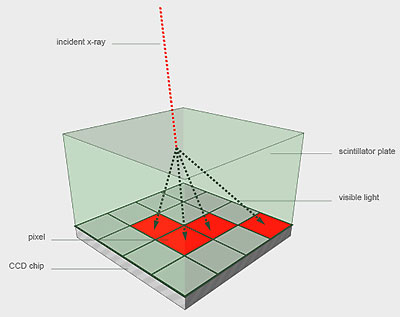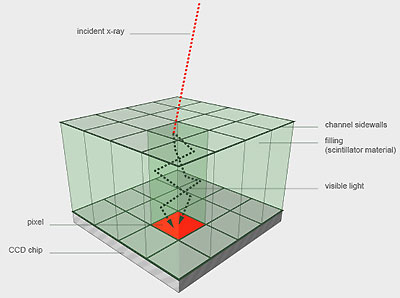The camera is claimed to take X-ray pictures that are more detailed and with a higher contrast than the conventional X-ray machines widely used by dentists today.
The camera itself was designed by the Scint-X company, while the key element of it - a scintillator device that converts X-rays to visible light that can then easily be detected by an inexpensive CCD imager - was built by another Swedish outfit, Nanospace.
The new scintillator design overcomes a major issue encountered with conventional unstructured scintillator plates. While the visible light created through X-ray absorption spreads on its way through the crystal in such plates, the new scintillator concept channels the light on its way to the CCD camera instead.
To build the new scintillator, narrow channels were etched into silicon to make a matrix that is then filled with a Thallium-doped Cesium Iodide scintillator material. When X-rays enter those channels, they are converted into green light, which is then reflected by the channel sidewalls so that it does not leave the channel. Thus, the spreading of light that would lead to crosstalk between neighbouring pixels on the CCD imaging chip is avoided.
Another important advantage of the X-ray unit itself is that it is much thinner than today’s models, making the procedure of inserting it into the patient’s mouth a more comfortable one.
Scint-X claims that the camera also has potential for use in space. The Swedish Space Corporation is planning to use the camera aboard a rocket with a planned launched in May 2011 by ESA.
’Our camera provides a resolution that is better than five microns and will be used to study the melting and solidification of metals when producing exotic materials in weightlessness,’ explained Per Wiklund of Scint-X.







Red Bull makes hydrogen fuel cell play with AVL
Surely EVs are the best solution for motor sports and for weight / performance dispense with the battery altogether by introducing paired conductors...